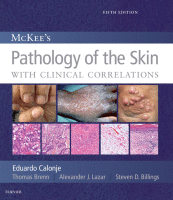Physical Address
304 North Cardinal St.
Dorchester Center, MA 02124

Cutaneous mesenchymal tumors are considered separately in this chapter because many of the tumors are either unique to or predominate in the skin or show specific features when presenting in the skin. The morphologic spectrum of cutaneous soft tissue tumors…

Although a wide variety of cysts may present in the skin, usually these turn out to be epidermoid (infundibular), trichilemmal, or glandular in nature ( Table 34.1 ). It can sometimes be difficult to determine whether a structure is a…

Apocrine nevus Clinical features Apocrine nevus as defined by an excess of normal apocrine glands (apocrine hamartoma, hamartomatous apocrine gland hyperplasia) is a very rare and clinically heterogeneous condition. Most often it presents with a fleshy axillary swelling. Erythematous or…

Ectopic sebaceous glands Clinical features Sebaceous glands are normally found in association with a hair follicle. However, at several mucosal sites, they may develop independently, presenting as small 1- to 3-mm yellow to white papules (Fordyce spots), which can be…

Hair nevi Clinical features Localized variations of hair growth or hair follicle numbers are more easily appreciated clinically than histologically. Increased growth of terminal hairs may be seen over a spina bifida defect and also occurs in hairy congenital melanocytic…

Cutaneous Metastases Secondary involvement of the integument by a malignant tumor may represent a metastatic phenomenon (such as following vascular or lymphatic emboli) or occur as a direct consequence of contiguous spread through tissue spaces or lymphatic and vascular channels…

Epidermal nevi Clinical features Epidermal nevi are of the following three subtypes, which are histologically identical and differ only in the degree of clinical involvement: nevus verrucosus, nevus unius lateris, ichthyosis hystrix (this has no relationship to ichthyosis). Lesions, which…

Introduction Improved and detailed understanding of the molecular basis of many of the diseases in this chapter continues to progress. While Ehlers-Danlos has been well understood for many years, our understanding has further expanded and a new classification scheme systematizes…

Disorders of Hypopigmentation Vitiligo Clinical features Vitiligo is a common acquired disease of unknown etiology characterized by loss of melanocytes resulting in macular areas of leukoderma that progressively enlarge and often become confluent. The incidence has been calculated as between…

Introduction Vasculitis and other forms of vascular damage are the subjects of this chapter. Although minimal criteria for the diagnosis of vasculitis may differ among experts, the presence of inflammation and some evidence of vascular damage in the form of…